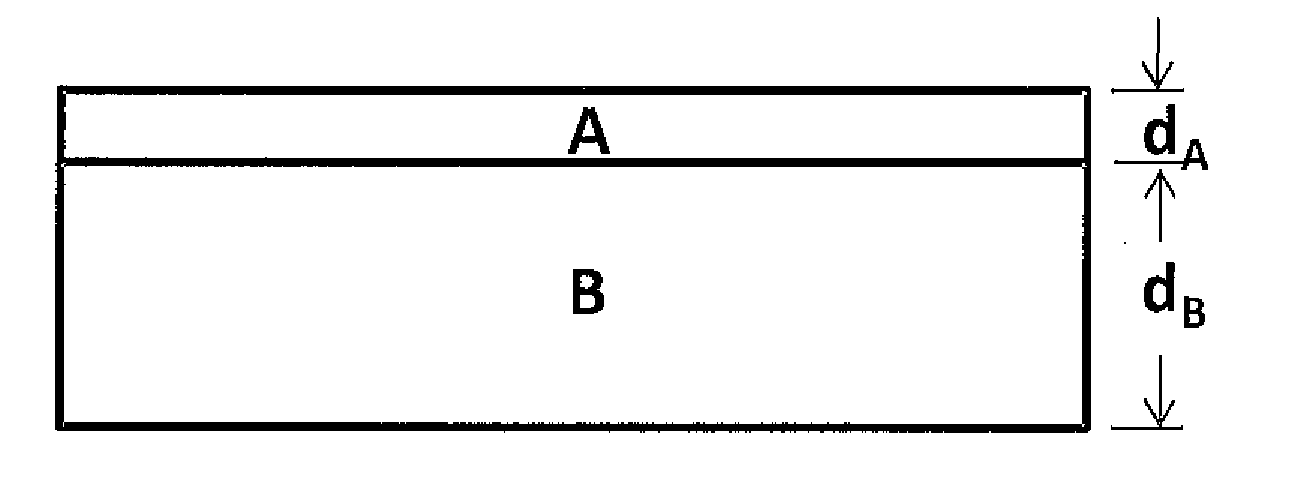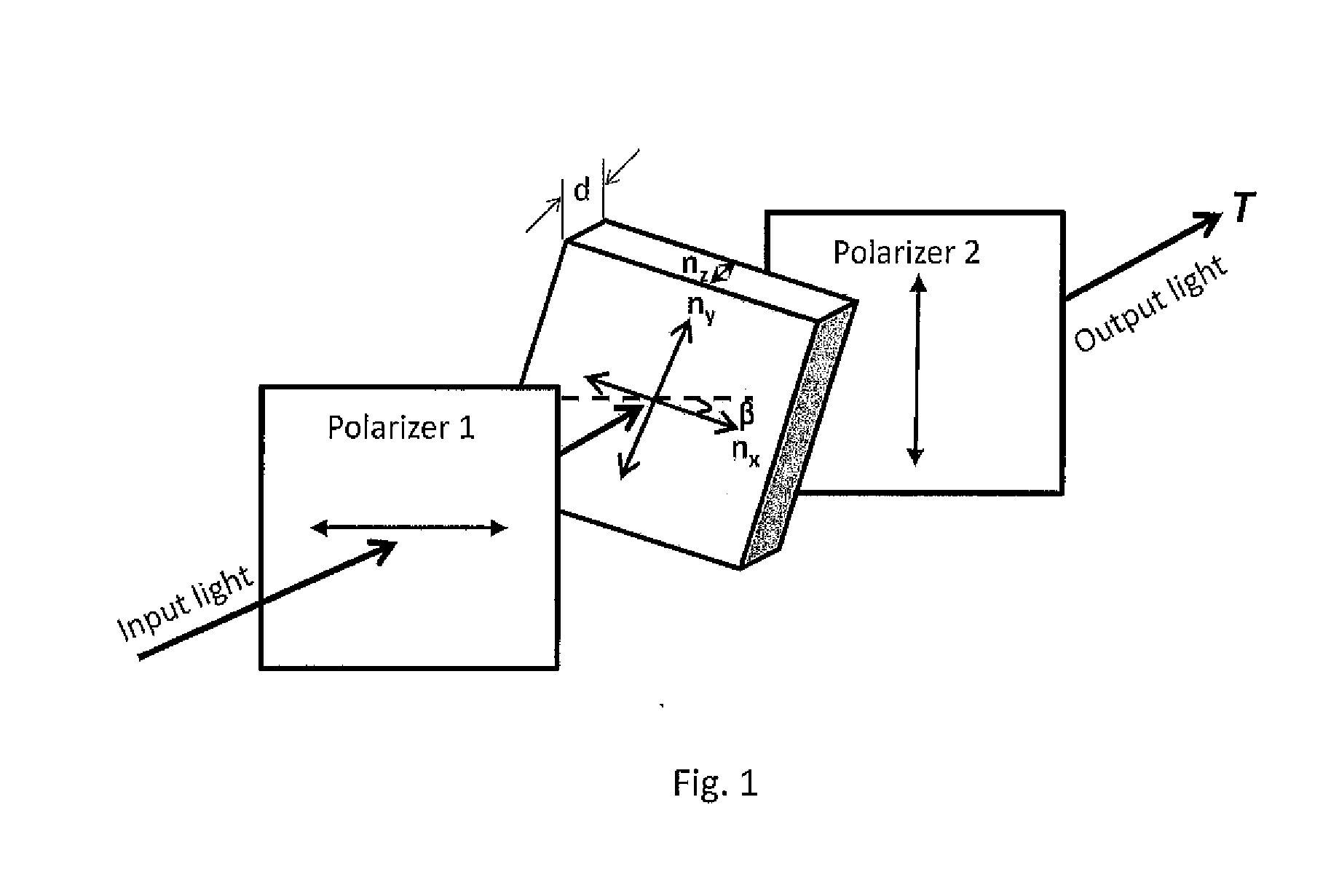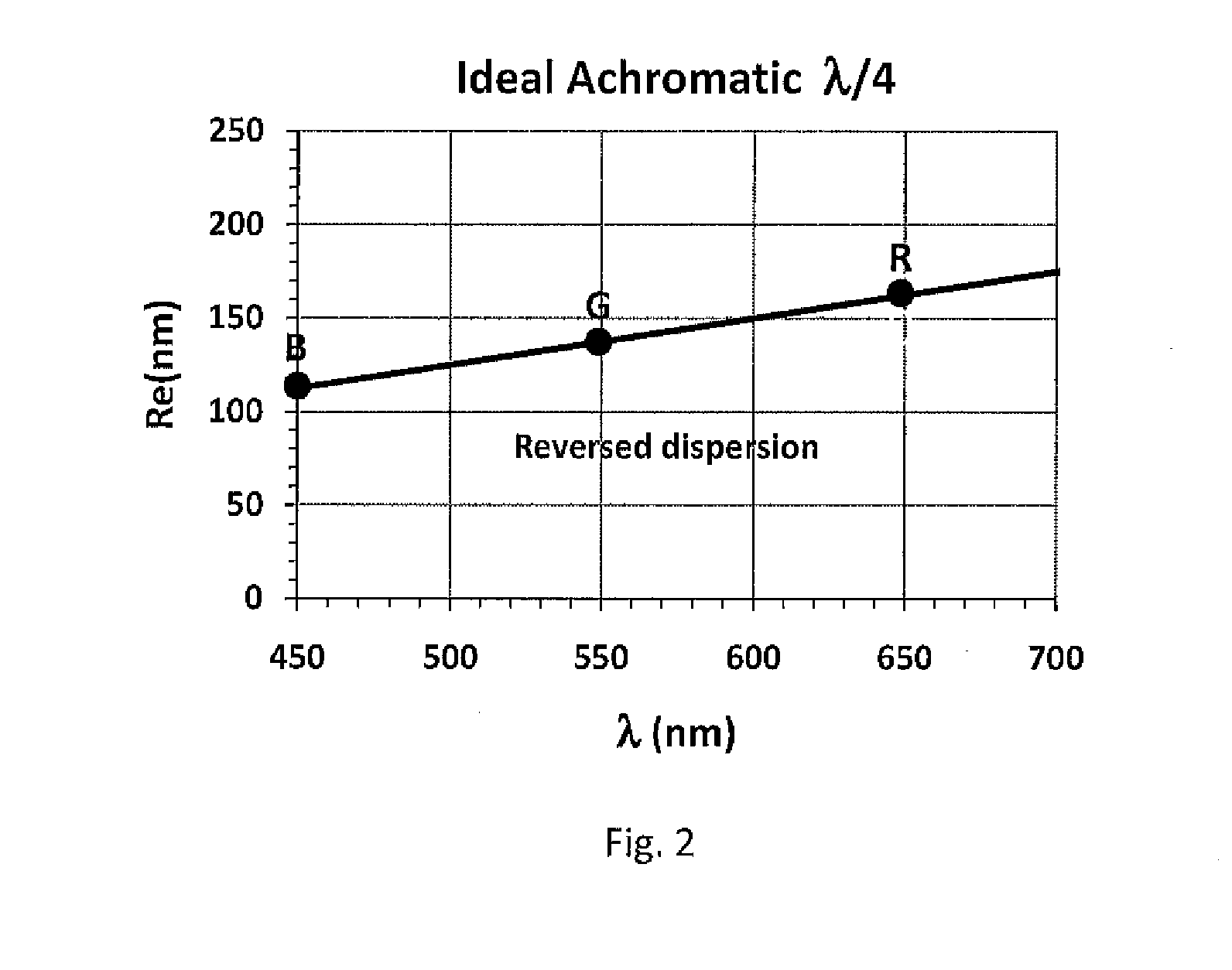Multilayer and single layer cellulose ester films having reversed optical dispersion
a technology of cellulose ester and cellulose ester film, which is applied in the field of multilayer cellulose ester film having reversed optical dispersion, can solve the problems of difficult to achieve, relatively low retardation, and inability to meet certain application requirements, and achieve high optical retardation and reverse dispersion
- Summary
- Abstract
- Description
- Claims
- Application Information
AI Technical Summary
Benefits of technology
Problems solved by technology
Method used
Image
Examples
example 1
Comparative
[0086]This example shows the optical retardation and dispersion of a single-layer film suitable for layer B in an optical waveplate.
[0087]Following the general solution preparation, a randomly substituted cellulose acetate propionate (DSAc=0.14, DSPr=1.71, DSOH=1.15) was used to prepare the following solution for Example 1:
Total solids24gCellulose ester21.6gPlasticizer2.4g triphenyl phosphateTotal solvent176gMethylene chloride153.12gMethanol22.88g
[0088]Following the general solvent cast procedures described above, the solution for Example 1 was used to obtain single-layer films. The films were annealed at 100° C. and 120° C. for 10 minutes, respectively, before they were uniaxially or simultaneous biaxially stretched under different stretching conditions. The stretching conditions and optical and film data of these films are listed in Table 1.
TABLE 1Optical properties for a single-layer cellulose acetate propionate film(DSAc = 0.14, DSPr = 1.71, DSOH = 1.15).StretchFilmTe...
example 2
Comparative
[0090]This example shows the optical retardation and dispersion of a single-layer film suitable for layer A in an optical waveplate.
[0091]Following the general solution preparation, a randomly (RDS: C6=0.92, C3=1.00, C2=0.96) substituted cellulose acetate propionate (DSAc=1.49, DSPr=1.44, DSOH=0.07) was used to prepare the following solution for Example 2:
Total solids24gCellulose ester21.6gPlasticizer2.4g Triphenyl phosphateTotal solvent176gMethylene chloride153.12gMethanol22.88g
[0092]Following the general solvent cast procedures described above, the solution for Example 2 was used to obtain single-layer films. The films were annealed at 100° C. and 120° C. for 10 minutes, respectively, before they were uniaxially or simultaneous biaxially stretched under different stretching conditions. The stretching conditions and optical and film data of these films are listed in Table 2.
TABLE 2Optical properties for a single-layer cellulose acetate propionate film(DSAc = 1.49, DSPr =...
example 3
Comparative
[0094]This example shows the optical retardation and dispersion of a single-layer film suitable for layer A in an optical waveplate.
[0095]A regioselectively substituted cellulose benzoate propionate in which the benzoate was primarily located on C2 and C3 was prepared according to U.S. patent application Ser. No. 12 / 539,817. 325.26 g of tributylmethylammonium dimethylphosphate ([TBMA]DMP) was added to a 3-neck 1 L round bottom flask equipped with mechanical stirring, a N2 / vacuum inlet, and an iC10 diamond tipped infrared probe (Mettler-Toledo AutoChem, Inc., Columbia, Md., USA). The flask was placed in a 100° C. oil bath and the [TBMA]DMP was stirred 17 h under vacuum (0.8-1.4 mm Hg). 139.4 g of NMP (30 wt %) was added to the [TBMA]DMP, and then the mixture was cooled to room temperature. While stirring rapidly at room temperature, 34.97 g of cellulose (7 wt %, DPv (degree of polymerization as determined from Cuene viscosity) 1080) was added to the solution (9 min additio...
PUM
| Property | Measurement | Unit |
|---|---|---|
| Temperature | aaaaa | aaaaa |
| Temperature | aaaaa | aaaaa |
| Length | aaaaa | aaaaa |
Abstract
Description
Claims
Application Information
 Login to View More
Login to View More - R&D
- Intellectual Property
- Life Sciences
- Materials
- Tech Scout
- Unparalleled Data Quality
- Higher Quality Content
- 60% Fewer Hallucinations
Browse by: Latest US Patents, China's latest patents, Technical Efficacy Thesaurus, Application Domain, Technology Topic, Popular Technical Reports.
© 2025 PatSnap. All rights reserved.Legal|Privacy policy|Modern Slavery Act Transparency Statement|Sitemap|About US| Contact US: help@patsnap.com



